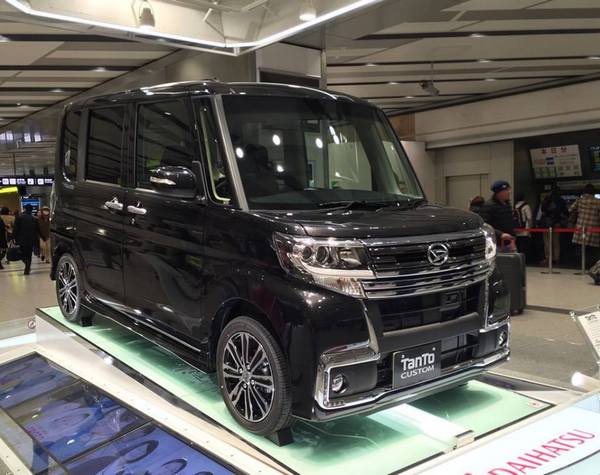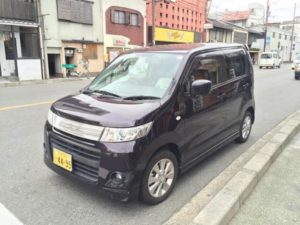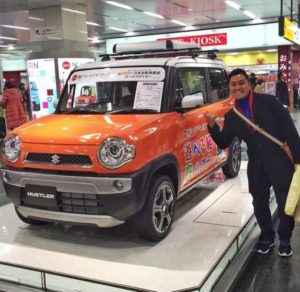The Japanese car culture, its quirks, and ‘Kei cars’

THE DAIHATSU Tanto. Carl Cabusas
If there was something that struck me about my recent trip, it was that Japan is very rich in history and culture, aside from being a very disciplined society and having really great food.
Being a car guy, and knowing that Japan is a major car production hub and home to big Japanese car brands, I could not help but be curious about the car culture in Japan.
Don’t get me wrong, they have very good and efficient public transport system, but they also have very good road networks and very modern back end support system for traffic services.
It would be a waste if they don’t take advantage of these amazing infrastructures that are already in place.
For many years now, Japanese cars have been consistently listed in the Top 10 brands in the world for reliability.
It only makes sense that some
Japanese would opt to travel with their own personal vehicle since they are known to patronize their own products.
The Japanese car industry has this peculiar category they call “Kei cars”. Kei Cars or Light cars in English, is a Japanese category of small vehicles, including passenger cars, two-seater sports car, microvans, and pickup trucks.
They are designed to comply with Japanese government tax and insurance regulations, and in most rural areas are exempted from the requirement to certify that adequate parking is available for the vehicle.

An example of the Kei car, Suzuki’s Wagon R.
carl cabusas
Expensive parking fee
Kei cars are identifiable by their yellow plates. These Kei cars are so popular in Japan partly due to the fact that they have very limited land area for parking.
Cost of property in Tokyo is so expensive that parking fees there would probably account for 25-30 percent of their living cost.
It might not be a good idea to own a car in Japan since parking fees are extremely high.
Parking fee starts at P600/hr to P4,000/day depending on the location in Japan, and which busy districts in Tokyo when you park your car.
Sky is the limit when it comes to parking fees in Central Tokyo.
That’s the reason why many prefer taking the train than driving.
But why need a car in Tokyo? Well, if you have a small family with a baby, carrying a stroller and a toddler, and maybe changing diapers in between train stations, buying groceries with your kids in town, it could be a better option.
Also, if you have a good job that pays well and you value comfort and convenience over practicality, then owning a car makes perfect sense.
Bottom line is that, fully packed and busy trains are not ideal for children and to other passengers as well.
It is just more convenient to have your own vehicle when you have a family even in a country like Japan wherein public transportation is considered to be the best.

The writer with the Suzuki Hustler. carl cabusas
Kei cars comes in all shapes and colors from different car makers, but the more popular ones are those from car manufacturers that have perfected the art of making small but extremely reliable vehicles.
These are from Daihatsu, Honda, Mitsubishi, Nissan and Suzuki.
The most popular (or at least the most visible) Kei car I have seen in many parts of Japan is the Suzuki Hustler. The Hustler is a sort of a crossover vehicle in a pint size.
These Kei cars are usually powered by turbocharged engines not exceeding three cylinders with less than one liter in displacement.
Did you know?
1. Getting a student driver’s license in Japan is very expensive and difficult. You have to take several written and practical exams and pass it. Upon passing it, the license is probationary.
2. Of course, they drive on the right side of the road while we drive on the left.
3. You have to get a different driver’s license for manual transmission vehicles and it is more expensive to secure.
4. You do see LHD cars in Japan, but these are mostly imported, high end cars from the US or Europe (German and Italian brands mostly). Since car taxation in Japan is based on engine size or displacement, these premium brands comes at a hefty price.
5. You do not see Korean brand vehicles in Japan.
6. Before you can buy car in Japan, you need to prove that you can park it. No proof of parking = no plate number.
7. Running cost is very expensive in Japan that after 2-3 years of ownership, many Japanese would just rather buy a new one than maintain old cars.
Disclaimer: The comments uploaded on this site do not necessarily represent or reflect the views of management and owner of Cebudailynews. We reserve the right to exclude comments that we deem to be inconsistent with our editorial standards.
